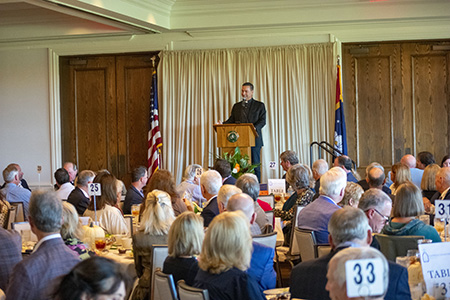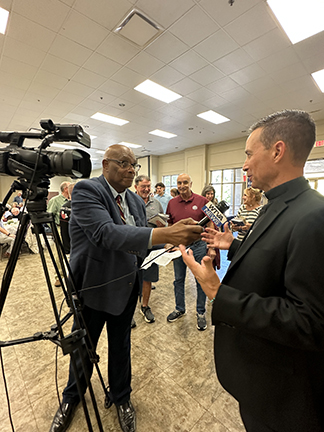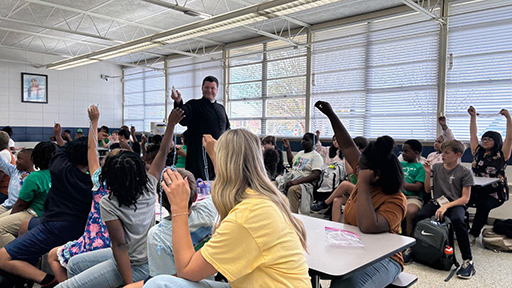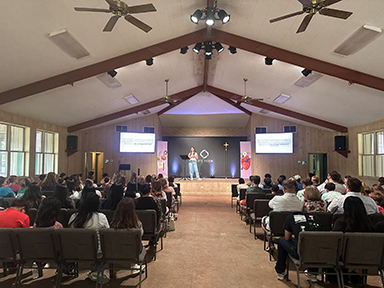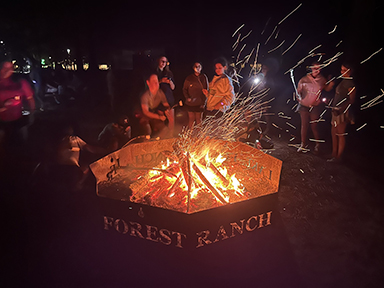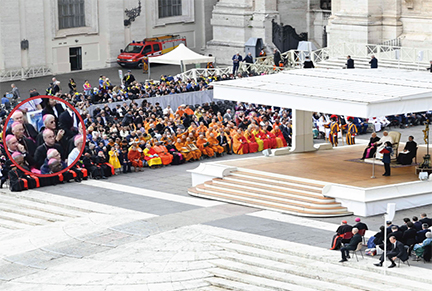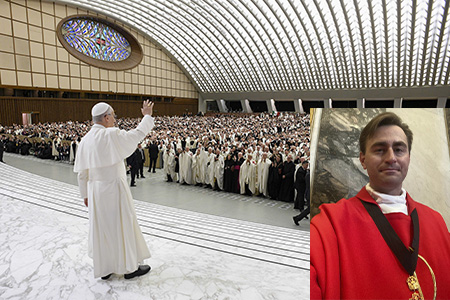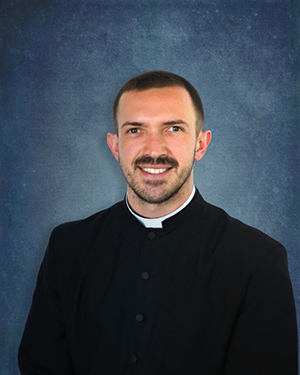By Joanna Puddister King and Tereza Ma
MAGNOLIA – The small but spirited Catholic community of St. James the Greater Parish in Magnolia gathered Saturday, Oct. 5 to celebrate 153 years of faith, friendship and perseverance – a legacy that began as a rural mission and continues today as a thriving parish in southern Pike County.
Though billed as the parish’s 150th anniversary celebration, the event had been postponed several years due to the pandemic. When parishioners finally gathered, the joy and gratitude were unmistakable.
Bishop Joseph R. Kopacz presided at an outdoor Mass beneath white tents set up beside the historic wooden church, which could not accommodate the large crowd that came to celebrate. Concelebrating with Bishop Kopacz were Father Suresh Thirumalareddy, pastor; Father Bill Henry, a former pastor; and Father P.J. Curley, who once served in the region.

The Mayor of Magnolia, Marvin Brumfield, joined the celebration and presented a proclamation recognizing St. James for its historic presence and contributions to the community.
Parishioners and guests from across Pike County gathered for music, fellowship and a hearty Southern meal following Mass. The afternoon included a silent auction, children’s face-painting, and food prepared by parishioners and friends from nearby parishes.
“It’s small, but powerful,” said parishioner Vicki Todd, who moved to Magnolia permanently nine years ago partly because of the charm of St. James. “We’ve spent months preparing for this day. People believe in St. James Parish – our little bitty church is just as beautiful as can be.”
Music minister Celena Johnson, who has led music since 2019, coordinated a combined choir of parishioners and musicians from St. James and St. Alphonsus Parish in McComb, reflecting the deep ties between the two faith communities. “I’m so blessed to have them,” she said. “We just keep it in the family.”
From its beginnings in the 1860s, St. James has depended on that sense of family. The parish traces its roots to Father Henry Picherit, who celebrated Mass in local homes before the first church was completed in 1874 and dedicated to St. James the Greater. Priests from Osyka, McComb, and Chatawa served the mission through the decades, including Redemptorists and the School Sisters of Notre Dame, whose presence at nearby Chatawa formed deep spiritual ties that endure today.
Several sisters who once lived or served in Chatawa returned for the anniversary, including Sister Gemma Marie Dittle, who praised Father Suresh’s leadership. “He’s so devoted and loves to teach and serve. It was a beautiful celebration,” she said. Sister Marie Clare Powell, 99, attended in honor of a lifelong friend – Sister Mary Clared – who played the organ for nearly 30 years. “We were classmates – she was one of the most faithful members of St. James,” she recalled.
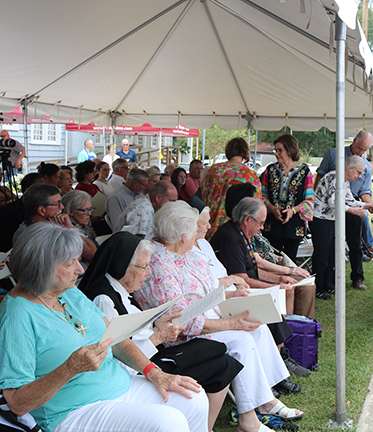
St. James remained a mission of St. Alphonsus McComb until Nov. 1, 2019, when Bishop Kopacz elevated it to parish status, recognizing its steady growth and service to Catholics throughout southern Pike County.
Bishop Kopacz said, “From the early days when the Redemptorists established this small mission church, you have grown into a beautiful expression of devoted, faith-filled followers of Christ sharing His Good News with one another and your neighbors in Pike County.”
For parishioners, the milestone was more than a look back – it was a renewal of their commitment to one another. “May God continue to bless you for your dedication and zeal for His church,” Bishop Kopacz, said.

